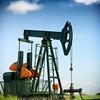
In an area like the oil industry where dangerous chemicals and gases may be present, the prevention of worker injury is important. The proper safety equipment can aid in protecting workers from dangerous and toxic gases like sulfur dioxide while at a job site.
Sulfur dioxide is a gas commonly found in crude oil, coal and ore that contains metals like aluminum, copper, zinc, lead and iron.
The formation of sulfur dioxide occurs when fuel-containing sulfur is burn, when gas is produced from oil and when metals are extracted from ore or gas is extracted from oil. Much of the sulfur dioxide released into the atmosphere comes from coal burning power plants, while other sources include petroleum refineries, cement manufacturing and metal processing facilities. Trains, large ships and other non-road diesel equipment burning high sulfur fuel release sulfur dioxide emissions into the air.
The toxic gas is most often seen in the form of a colorless gas with a strong, pungent smell, according to the Centers for Disease Control and Prevention. It can also be seen as a liquid in temperatures below 14 degrees Fahrenheit.
While work is being done to reduce the emissions of sulfur dioxide, employers are responsible for providing adequate education and training so employees can recognize the presence of sulfur dioxide.
Know the warning signs of sulfur dioxide presence
Respiratory and heart problems can arise for individuals who have heart or lung diseases as well as asthma they breathe-in the gas of sulfur dioxide. Individuals can be affected by sulfur dioxide when it is inhaled or if it comes into contact with eyes or skin, the CDC said. Symptoms of sulfur dioxide exposure include burning eyes, coughing and chest tightness. Employees can also experience difficulty breathing if they are exposed to sulfur dioxide. In severe cases, a worker may stop breathing.
According to the CDC, the current exposure limit set by the OSHA is five parts of sulfur dioxide per million parts of air averaged over an eight-hour work shift. So if employees become ill or are otherwise exposed to amounts of sulfur dioxide that exceed these limits, companies may be in violation of OSHA regulations and can be cited for safety violations.
Toxic gas sensors can prevent worker injury by alerting employees of potentially dangerous gas emissions or when a flammable gas is present.